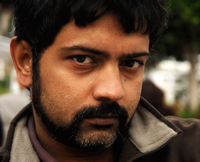Artist's statement on the work - Fizool, 2015 This work is a critical look at the practice of contemporary Design. I believe that most formal design practice is heavily influenced by corporate and capitalist institutions, which has led to a situation where Design is now evaluated primarily on the basis of profitability. This means that the Design that will sell, that will force the user to consume more, replace more often, essentially design that will profit the manufacturer, is preferred. This is not a trend that has developed on its own but instead it is a concerted effort of capitalist corportions through a theory called planned obsolescence. In the post-World War 2 scenario, when the efficiency of industrial manufacturing had peaked but there was a slowdown in consumption, Design theorists talked about how they should design products that are made to last for limited periods while using advertising (propaganda) to convince users of the need to replace and buy new products. These ideas of planned obsolescence combined with the propaganda of perceived obsolescence has created an extremely wasteful economy today. Indeed users/citizens are often referred to as consumers (to consume means to exhaust, to finish off) today and these words have become synonymous. This particular work is a look at the automotive industry. We apparently have newer and better vehicles on offer today but almost all of them have an incredibly short lifespan. Vehicles are designed in such a way that it is almost impossible for a layman to repair anything. The user is forced to go to service centres where the idea of repair has been substituted with that of replacement. This is creating an incredible amount of automotive junk. Is the ecological cost of more frequent manufacture and that of replaced parts included in the evaluation of how eco-friendly a product is? What about the impact of recycling parts that may have been repaired? |
Asim Waqif Fizool, 2015 |
